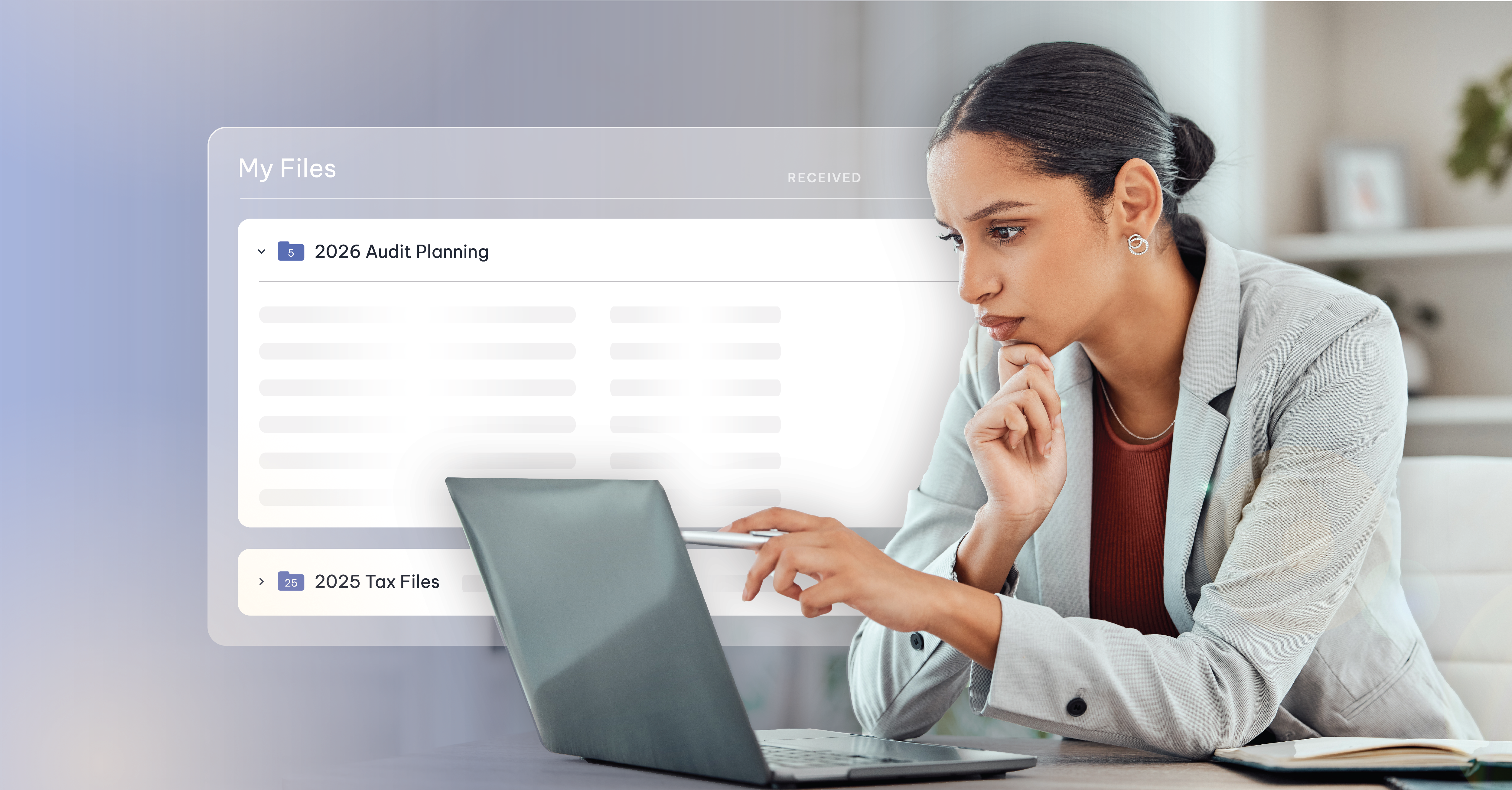May 29, 2025 8:00:00 AM |

In today’s remote and digital-first world, sharing files is a daily activity. But doing it securely is where some professionals fall short.
From audit firms handling sensitive client data to finance teams exchanging confidential reports, secure file sharing is non-negotiable. Yet outdated tools and inconsistent practices often leave businesses exposed to breaches, to compliance risks, and to serious reputational damage.
This guide will walk through how to securely share files, explain the risks of getting it wrong, and outline the best practices and tools designed to keep your data protected. We’ll also show how platforms like Suralink are purpose-built to help firms maintain security, transparency, and client trust.
Why Secure File Sharing Matters
Sending a file might feel simple. But without the right protections, that file could become a vulnerability or even a liability.
The risks are real:
- Cyberattacks are more sophisticated than ever
- Email phishing is on the rise
- Regulatory pressure is increasing across every industry
Accounting, legal, and financial service professionals are especially at risk due to the type of information they handle: financial statements, client personally identifiable information (PII), contracts, audit documentation. One wrong move, and your firm could be facing a breach, a fine, or a client loss.
Beyond compliance, secure file sharing builds confidence. It shows your clients and internal stakeholders that you take their data seriously. And that your processes are designed to protect it.
Common File Sharing Mistakes to Avoid
Even well-meaning teams make security missteps. Here are some of the biggest:
- Sending attachments over email without encryption or password protection
- Using public links (e.g., shared drives without authentication)
- Failing to set expiration dates or access limits
- Sharing documents without audit tracking
- Sending the wrong version of a file to clients or regulators
These mistakes aren’t just technical issues, they're process issues. And they can be avoided with the right systems and education.
How to Securely Share Files: 8 Best Practices
To protect sensitive data and maintain compliance, here’s what secure file sharing should look like:
1. Use End-to-End Encryption
Make sure your files are encrypted both in transit and at rest. This means the file can only be read by the sender and the intended recipient—not intercepted by a third party.
2. Set Role-Based Access Controls
Not everyone should have access to every document. Assign permissions based on roles, ensuring only the right people can view or download sensitive materials.
3. Enable Multi-Factor Authentication (MFA)
Passwords aren’t enough. Use MFA to require a second verification method, like a code sent to a mobile device.
4. Apply File Expiration and Revocation
Give access only for the amount of time it's needed. Once a deadline passes, the file link should expire or be disabled automatically.
5. Use Secure Links and Client Portals
Avoid sharing public links. Instead, use authenticated, private links that require login or verification.
6. Maintain a Full Audit Trail
Track who accessed each file, when they viewed or downloaded it, and from where. This supports compliance and simplifies investigations if anything goes wrong.
7. Keep Software Updated
Outdated platforms are prime targets for attackers. Regularly update your file-sharing systems to patch known vulnerabilities.
8. Educate Your Team
Security isn’t just about tools, but habits. Train your team on how to share documents securely, avoid phishing scams, and recognize red flags.
Tools and Platforms for Secure File Sharing
There’s no shortage of file-sharing tools out there. But not all are created equal.
Common Options:
- Email with encrypted attachments (limited control)
- Consumer-grade cloud tools (e.g., Dropbox, Google Drive)
- Encrypted file transfer protocols (e.g., SFTP, FTPS)
- Enterprise-grade collaboration portals
For compliance-heavy industries, consumer-grade tools often fall short. They may lack audit trails, fine-grained permissions, or encryption protocols needed to meet standards like SOC 2, GDPR, or HIPAA.
Why General Tools Aren’t Enough
Platforms like email, Google Drive, or WeTransfer are easy to use—but they weren’t designed for regulated industries. They can create security gaps and make it hard to track who accessed what.
For example:
- Email links can be forwarded
- File versions can get lost in long threads
- Access logs may be incomplete or nonexistent
That’s why specialized solutions matter.
How Suralink Helps You Share Files Securely
Suralink is built specifically for audit, tax, and financial services firms that need to manage sensitive file sharing at scale.
Here’s how it keeps your documents protected:
- Encrypted Client Collaboration
- All documents are encrypted during transfer and at rest.
- Role-Based Access and Request Tracking
- Only the right people can see the right files—and every request is logged.
- Centralized, Secure Portal
- Clients upload and access documents in a secure, authenticated environment.
- Audit-Ready Controls
- Complete history of who accessed or edited what, with timestamps.
- File Expiration and Version History
- Share time-limited links, and track document versions automatically.
With Suralink, you’re not just sharing files—you’re sharing them securely, transparently, and with compliance in mind.
Time to do Things More Efficiently
Secure file sharing isn’t a luxury anymore. It’s a baseline requirement for doing business in a digital, client-focused world.
Whether you’re exchanging tax documents, audit evidence, or sensitive contracts, the methods you use to share files directly impact your risk, your compliance posture, and your client relationships.
If your current process relies on patching together email threads, shared drives, and hope—it’s time to rethink it.
Suralink helps you move fast without compromising security.
Schedule a demo to see how secure file sharing can be easy, audit-ready, and built for modern firms.
Subscribe
Get out latest news and tactics that can help you and your business!
By clicking submit you agree to these terms and conditions.

